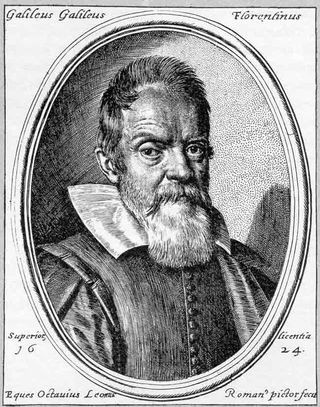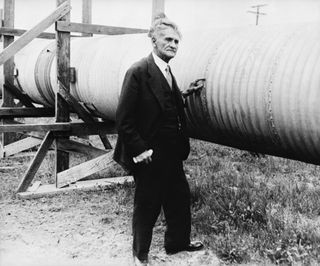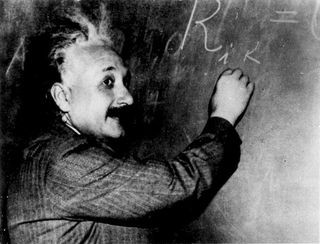The speed of light travels at approximately 299,792,458 meters per second (about 186,282 miles per second), a constant that has profound implications for our understanding of the universe, according to NASA. Are you planning a trip to explore Vietnam? With SIXT.VN, you can explore Vietnam with ease and delve deeper into the science and beauty of the universe during your journey. Begin your adventure with reliable transport, comfortable accommodations, and tours crafted for discovery, incorporating insights from astronomy and physics.
1. Understanding The Speed Of Light: A Universal Constant
The speed of light, denoted as “c,” represents the ultimate speed limit in our universe and it’s not just a number; it’s a fundamental constant that shapes our understanding of space, time, and the very fabric of reality. So, what makes it so significant?
- The Speed of Light Explained: The speed of light in a vacuum is precisely 299,792,458 meters per second (approximately 186,282 miles per second). This speed is constant, meaning it does not change regardless of the motion of the light source or the observer.
- Einstein’s Theory of Special Relativity: Albert Einstein’s theory of special relativity, published in 1905, revolutionized physics by asserting that the speed of light in a vacuum is the same for all observers, regardless of their relative motion or the motion of the light source. This principle has profound implications, leading to concepts such as time dilation and length contraction.
 Abstract, futuristic image of blue light streaks radiating outward, giving the impression of rapid movement or traveling at high speed, inspired by the concept of faster-than-light travel
Abstract, futuristic image of blue light streaks radiating outward, giving the impression of rapid movement or traveling at high speed, inspired by the concept of faster-than-light travel
1.1 Implications Of The Speed Of Light
The speed of light isn’t just a number; it’s a cornerstone of modern physics with far-reaching implications:
- Universal Speed Limit: According to Einstein’s theory of special relativity, nothing in the universe can travel faster than light. As an object approaches the speed of light, its mass increases exponentially, requiring infinite energy to reach light speed.
- Defining Measurements: The speed of light is used to define international standard measurements, including the meter. In 1983, the meter was redefined based on the distance light travels in a specific fraction of a second, fixing the speed of light as a fundamental constant.
SIXT.VN offers seamless travel services to explore Vietnam’s beauty while contemplating these scientific concepts. From airport transfers to curated tours, SIXT.VN ensures a smooth and enriching travel experience.
1.2 What Is A Light-Year?
Understanding the speed of light is crucial for comprehending vast cosmic distances. One of the most common units for measuring these distances is the light-year:
- Definition: A light-year is the distance light travels in one year.
- Distance: Approximately 6 trillion miles (10 trillion kilometers).
- Usage: Used to measure distances between stars and galaxies.
According to NASA’s Glenn Research Center, to visualize a light-year, imagine laying the Earth’s circumference (24,900 miles) in a straight line, multiplying it by 7.5 (one light-second), and then placing 31.6 million such lines end-to-end.
1.3 Traveling One Light-Year: A Cosmic Journey
To truly grasp the immensity of a light-year, consider the time it would take to travel such a distance with our current technology:
- By Airplane: An airplane traveling at 600 mph (965 km/h) would take approximately 1 million years to travel one light-year.
- By Spacecraft: A crewed spacecraft like the Apollo lunar module would take about 27,000 years, according to BBC Sky at Night Magazine.
Imagine planning such a trip. While we may not be traveling to distant stars anytime soon, you can embark on your own adventure with SIXT.VN, exploring the wonders of Vietnam.
2. Exploring The Historical Measurements Of The Speed Of Light
The quest to measure the speed of light has spanned centuries, with contributions from philosophers and scientists around the globe.
2.1 Early Speculations
- Ancient Greece: Philosophers like Empedocles and Aristotle debated whether light had a speed or was instantaneous. Empedocles believed light traveled, while Aristotle argued it was immediate.
- Galileo Galilei: In the 1600s, Galileo attempted to measure the speed of light using lanterns over short distances but could only conclude that light traveled at least ten times faster than sound.
 Galileo Galilei is credited with discovering the first four moons of Jupiter.
Galileo Galilei is credited with discovering the first four moons of Jupiter.
2.2 Rømer’s Breakthrough
Ole Rømer, a Danish astronomer, made the first quantitative estimate of the speed of light in 1676.
- Method: By observing eclipses of Jupiter’s moon Io, Rømer noticed that the eclipses appeared to occur later when Earth and Jupiter were farther apart.
- Conclusion: Rømer attributed the delay to the time it took light to travel the increased distance between Earth and Jupiter.
- Estimate: His calculations estimated the speed of light at approximately 124,000 miles per second (200,000 km/s).
2.3 Later Refinements
- James Bradley (1728): Based on the aberration of starlight, Bradley estimated the speed of light at 185,000 miles per second (301,000 km/s), accurate to within 1% of the actual value, according to the American Physical Society.
- Hippolyte Fizeau (mid-1800s): Fizeau used a rotating toothed wheel to measure the time it took for light to travel to a mirror and back, achieving a result close to the actual speed.
- Leon Foucault (mid-1800s): Foucault employed a rotating mirror technique, similar to Fizeau’s, to refine the measurement further.
2.4 Michelson’s Precision
Albert A. Michelson dedicated much of his career to precisely measuring the speed of light.
- Michelson-Morley Experiment: Although primarily designed to detect the luminiferous ether, this experiment provided highly accurate data that contributed to understanding the speed of light.
- Later Experiments: Michelson conducted multiple experiments, including one using a mile-long vacuum tube, to minimize the effect of air on light speed.
- Accuracy: His measurements were accepted as the most accurate for over 40 years.
 Dr. Albert A. Michelson stands next to a large tube supported by wooden beams.
Dr. Albert A. Michelson stands next to a large tube supported by wooden beams.
2.5 The Michelson-Morley Experiment And Its Impact
The Michelson-Morley experiment had a profound impact on physics:
- Luminiferous Ether: Physicists believed light propagated through a medium called the luminiferous ether.
- Experiment: Michelson and Morley designed an interferometer to detect the ether’s presence.
- Results: The experiment failed to detect the ether, leading to the conclusion that light travels through a vacuum.
This experiment, as noted by astrophysicist Ethan Siegal in Forbes, revolutionized our understanding of light and earned Michelson a Nobel Prize for “a very precise non-discovery.”
While exploring Hanoi, SIXT.VN can help you navigate the city, providing reliable transportation and insights into Vietnam’s cultural and scientific landmarks. Just as scientists explored the mysteries of light, you can discover the hidden gems of Hanoi with ease.
3. Einstein’s Relativity And The Immutable Speed Of Light
Albert Einstein’s theory of special relativity fundamentally changed our understanding of the speed of light and its role in the universe.
3.1 Key Principles Of Special Relativity
- Constant Speed Of Light: The speed of light in a vacuum is the same for all observers, regardless of their motion relative to the light source.
- Relativity Of Simultaneity: Events that are simultaneous for one observer may not be simultaneous for another if they are in relative motion.
- Time Dilation: Time passes more slowly for objects in motion relative to a stationary observer.
- Length Contraction: The length of an object in motion appears shorter in the direction of motion.
- Mass Increase: As an object approaches the speed of light, its mass increases, requiring more energy to accelerate.
3.2 E = Mc²: The Famous Equation
Einstein’s famous equation, E = mc², describes the relationship between energy (E), mass (m), and the speed of light (c).
- Energy-Mass Equivalence: The equation shows that mass and energy are interchangeable; small amounts of mass contain enormous amounts of energy.
- Speed Of Light As Conversion Factor: The speed of light squared (c²) serves as a conversion factor, determining how much energy is contained within matter.
 Albert Einstein writing on a blackboard.
Albert Einstein writing on a blackboard.
3.3 Implications For Space Travel
The speed of light has profound implications for space travel:
- Speed Limit: Because mass increases as an object approaches the speed of light, reaching light speed would require infinite energy, making it impossible for objects with mass.
- Time Travel: Moving close to the speed of light can lead to time dilation, where time slows down for the traveler relative to a stationary observer, offering a form of time travel into the future.
As you plan your travels with SIXT.VN, reflect on the possibilities and limitations of space travel. While interstellar journeys at light speed remain in the realm of science fiction, exploring Vietnam’s diverse landscapes and cultural heritage is a tangible adventure awaiting you.
4. What Can Travel Faster Than The Speed Of Light?
While the speed of light is the ultimate speed limit within our local universe, there are phenomena that appear to exceed it.
4.1 Expansion Of The Universe
The universe expands at a rate proportional to distance, described by Hubble’s Law.
- Expansion Rate: The universe expands at approximately 42 miles (68 kilometers) per second for each megaparsec (3.26 million light-years) of distance.
- Superluminal Speeds: At vast distances, the expansion rate exceeds the speed of light, meaning galaxies far away from us are receding faster than light.
4.2 General Relativity And Non-Local Physics
Einstein’s theory of general relativity allows for behavior that seems to violate special relativity at cosmic scales.
- Distant Galaxies: General relativity permits distant galaxies to recede at speeds greater than light because the expansion of space is not bound by the same rules as objects moving within space.
- Special Relativity: Special relativity applies locally, setting a speed limit within the universe, but general relativity governs the behavior of the universe on a grander scale.
Exploring Vietnam with SIXT.VN provides a different perspective on our place in the universe. As the cosmos expands, your horizons can expand too, with seamless travel and unforgettable experiences.
5. Does Light Ever Slow Down?
While the speed of light in a vacuum is constant, it can be slowed down when passing through a medium.
5.1 Refractive Index
The refractive index of a material determines how much it slows down light.
- Definition: The refractive index is the ratio of the speed of light in a vacuum to its speed in a specific medium.
- Examples:
- Air: Light slows down by a tiny fraction (three ten-thousandths).
- Diamond: Light slows to less than half its speed in a vacuum.
 A sparkling diamond amongst dark coal-like rock.
A sparkling diamond amongst dark coal-like rock.
5.2 Trapping And Stopping Light
Scientists have found ways to trap and even stop light under specific conditions.
- Ultra-Cold Atoms: Light can be trapped inside ultra-cold clouds of atoms. A 2001 study in Nature demonstrated coherent optical information storage using halted light pulses.
- Exceptional Points: A 2018 study in Physical Review Letters proposed stopping light at “exceptional points” where two light emissions intersect.
5.3 Slowing Light In A Vacuum
Even in a vacuum, light can be slowed down.
- Scottish Scientists: In 2015, Scottish scientists slowed down single photons in a vacuum, as reported in Science. The difference was minute but significant, proving that light can travel slower than the standard speed of light.
Traveling through Vietnam with SIXT.VN allows you to appreciate the wonders of our world. From the bustling streets of Hanoi to the serene landscapes of Ha Long Bay, each experience is a reminder of the incredible phenomena that shape our universe.
6. The Dream Of Faster-Than-Light Travel
The idea of traveling faster than light has captured the imagination of scientists and science fiction writers alike.
6.1 Science Fiction’s Influence
- Warp Speed: Faster-than-light travel is a staple in science fiction, enabling interstellar voyages and connecting distant star systems.
- Popular Franchises: “Star Trek” and “Star Wars” rely on warp drive and hyperspace to facilitate their stories.
6.2 Theoretical Possibilities
While special relativity prohibits exceeding the speed of light, there are theoretical concepts that might allow effective faster-than-light travel.
- Wormholes: Hypothetical tunnels through spacetime that could connect distant points in the universe.
- Warp Drives: Theoretical propulsion systems that would distort spacetime around a spacecraft, allowing it to travel vast distances without exceeding the speed of light locally.
According to Seth Shostak, an astronomer at the SETI Institute, without faster-than-light travel, reaching even the nearest star system would take hundreds of thousands of years, making many science fiction scenarios impossible.
As you explore Vietnam with SIXT.VN, dream of the future of space travel. While warp drives may remain in the realm of science fiction for now, the spirit of exploration and discovery is alive and well in every journey you take.
7. Practical Applications And Future Implications
Understanding the speed of light has numerous practical applications and continues to shape our technological advancements.
7.1 Communication Technologies
- Fiber Optics: Fiber optic cables use light to transmit data at high speeds, enabling fast internet and telecommunications.
- Satellite Communications: Signals transmitted via satellites travel at the speed of light, facilitating global communication networks.
7.2 Scientific Research
- Astronomy: Astronomers use the speed of light to measure distances to stars and galaxies, study the early universe, and understand cosmic phenomena.
- Particle Physics: Particle accelerators rely on the principles of relativity and the speed of light to study subatomic particles and fundamental forces.
7.3 Navigation Systems
- GPS: Global Positioning System (GPS) satellites use precise timing signals based on the speed of light to determine locations on Earth.
- Space Navigation: Spacecraft navigation relies on accurate measurements of light travel time to ensure precise trajectories.
SIXT.VN embraces innovation to enhance your travel experience. Just as scientists harness the speed of light for communication and navigation, SIXT.VN provides seamless services to guide you through Vietnam.
8. FAQs About The Speed Of Light
Here are some frequently asked questions about the speed of light, answered by experts and supported by research.
8.1 What Is Faster Than The Speed Of Light?
Nothing within our local spacetime is known to travel faster than the speed of light. However, the expansion of the universe can cause distant galaxies to recede from us at superluminal speeds.
8.2 Is The Speed Of Light Constant?
The speed of light is a universal constant in a vacuum. However, it can slow down when passing through a medium such as water or glass.
8.3 Who Discovered The Speed Of Light?
One of the first measurements of the speed of light was made by Ole Rømer in 1676, through observations of Jupiter’s moons.
8.4 How Do We Know The Speed Of Light?
Ole Rømer measured the speed of light by observing the timing of eclipses of Jupiter’s moon Io, noting differences based on the relative positions of Earth and Jupiter.
8.5 Can Humans Travel At The Speed Of Light?
According to Einstein’s theory of special relativity, objects with mass cannot reach the speed of light because their mass would become infinite, requiring infinite energy.
8.6 What Is A Light-Year And How Is It Measured?
A light-year is the distance light travels in one year, approximately 6 trillion miles (10 trillion kilometers). It’s measured by multiplying the speed of light by the number of seconds in a year.
8.7 Does Light Have Mass?
Light consists of photons, which are massless particles. However, photons have energy and momentum, which can exert pressure and interact with matter.
8.8 Can Light Bend?
Yes, light can bend through a phenomenon called refraction when it passes from one medium to another, such as from air to water. Light can also bend due to gravity, as predicted by Einstein’s theory of general relativity.
8.9 How Does The Speed Of Light Affect Our Daily Lives?
The speed of light is crucial for various technologies, including fiber optic communication, GPS, and satellite communication, which all rely on the constant and predictable speed of light for accurate data transmission and navigation.
8.10 What Is The Significance Of The Speed Of Light In Cosmology?
In cosmology, the speed of light helps determine the age and size of the observable universe. By measuring the light from distant galaxies, astronomers can infer their distance and age, providing insights into the universe’s history and evolution.
9. Explore Vietnam With SIXT.VN
As you ponder the mysteries of the universe and the speed of light, remember that incredible adventures await you closer to home. SIXT.VN invites you to explore the beauty and culture of Vietnam with our comprehensive travel services.
9.1 Tailored Travel Services
SIXT.VN offers a range of services to make your trip to Vietnam unforgettable.
- Airport Transfers: Start your journey stress-free with reliable and comfortable airport transfer services.
- Hotel Booking: Choose from a wide selection of hotels to suit your budget and preferences, ensuring a comfortable stay.
- Tour Packages: Discover the best of Vietnam with our curated tour packages, designed to showcase the country’s diverse landscapes and cultural heritage.
9.2 Unforgettable Destinations
Explore Vietnam’s most iconic destinations with SIXT.VN.
- Hanoi: Immerse yourself in the rich history and vibrant culture of Vietnam’s capital city.
- Ha Long Bay: Cruise through the stunning emerald waters and admire the towering limestone islands.
- Hoi An: Wander through the charming ancient town, a UNESCO World Heritage site, and experience its unique blend of cultures.
9.3 Book Your Adventure Today
Ready to embark on your Vietnamese adventure? Contact SIXT.VN today to book your travel services.
- Address: 260 Cau Giay, Hanoi, Vietnam
- Hotline/Whatsapp: +84 986 244 358
- Website: SIXT.VN
9.4 Experience The Best Of Vietnam With SIXT.VN
Don’t let the complexities of travel planning hold you back. With SIXT.VN, you can enjoy a seamless and unforgettable journey, exploring the wonders of Vietnam with ease and confidence.
From the bustling cities to the serene landscapes, Vietnam offers a wealth of experiences waiting to be discovered. Let SIXT.VN be your guide, ensuring every moment is filled with joy and adventure.
As you travel through Vietnam, consider the words of Albert Einstein, who once said, “The most beautiful thing we can experience is the mysterious. It is the source of all true art and science.” Embrace the mystery, explore the unknown, and let your journey with SIXT.VN be a testament to the beauty of discovery.



